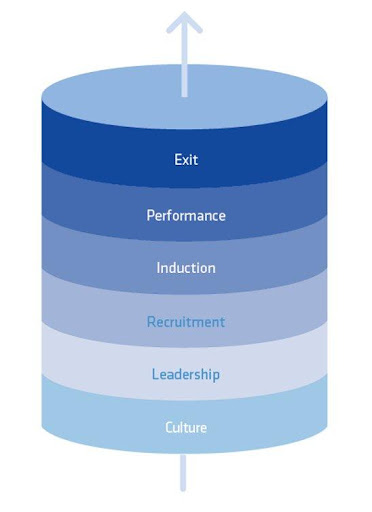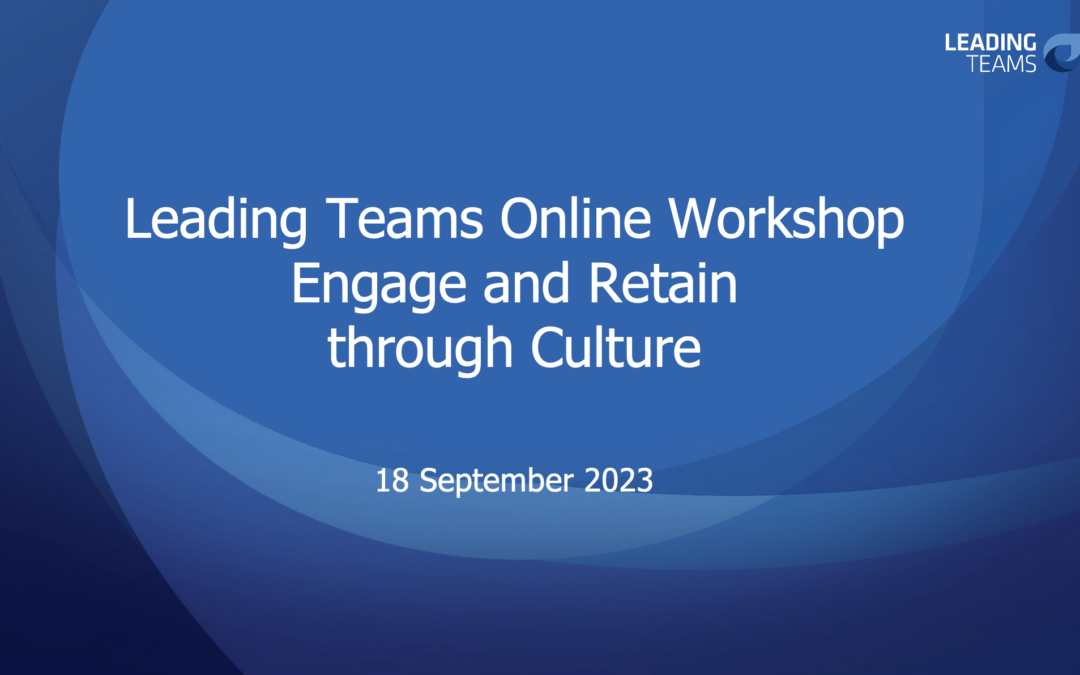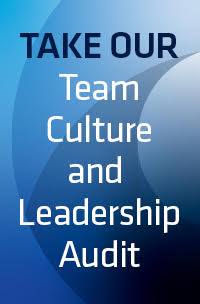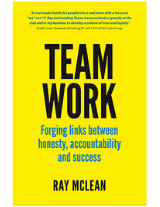The competition to retain talent has never been fiercer.
According to the SEEK Laws of Attraction Study in 2022, 73% of candidates advised that positive workplace culture is a crucial factor when deciding where they want to work. Culture is an equally important factor in retaining and engaging your team.
Organisations can engage and retain people through offering competitive remuneration, having a strong benefits program, providing flexibility, career pathways and wellbeing programs. However, our experience shows us that offering competitive remuneration and good benefits aren’t the highest drivers of engagement and retention. High performing organisations prioritise their culture by being clear on the behaviours they want to create which ensures their people feel valued, trusted, empowered, and connected to the purpose of the organisation.
Losing team members incurs significant costs to any organisation, both monetarily and culturally. Monetary costs can typically range from 50-150% of an employee’s annual salary when you consider hiring, onboarding, training costs, and loss of productivity. It typically takes new employees up to 6 months to become competent in their role. The indirect costs associated with employee turnover encompass its effects on organisational culture. This includes the impact departures have on levels of engagement of remaining employees and the repercussions for team members who take on additional workloads.
 In our recent online workshop exploring how leaders can better retain and engage their team through culture, we shared the Leading Teams High Performing Teams model and the Cylinder model (above). The Cylinder model illustrates the important role that culture, and leaders play throughout the employee lifecycle, from entry through to exit. Ensuring that team members are better people due to being a part of the organisation.
In our recent online workshop exploring how leaders can better retain and engage their team through culture, we shared the Leading Teams High Performing Teams model and the Cylinder model (above). The Cylinder model illustrates the important role that culture, and leaders play throughout the employee lifecycle, from entry through to exit. Ensuring that team members are better people due to being a part of the organisation.
A powerful example of leaders driving culture is a story about a car dealership Leading Teams worked with in Brisbane. Every Monday morning the leaders were seen out the front of the dealership picking up the rubbish left by partygoers in the car parking lot over the weekend. As leaders they didn’t have to do this, they could have easily delegated this task. However, doing so sent a clear message to all team members, especially new ones about the culture of their team and how to behave.
Another key factor in retaining and engaging your team is reward. Teams and leaders that regularly reward and recognise the performance of their people create a powerful culture. It is important to be deliberate about what you are rewarding as a leader. If you work in a sales business and only reward the people with the most sales, this can have a negative impact on your culture over the long term as only a few people in the organisation are eligible to be rewarded. Alternatively, if you reward people based on team behaviours or values then every team member from the CEO to the administration assistant is provided an opportunity to be recognised and rewarded, which encourages people to put in discretionary effort and want to stay with the business.
Having clarity and connection on team behaviours allows team members to not only reward each other but challenge one another in a productive way. Having a clear purpose, understanding why your team exists and how to behave is crucial to ensuring feedback can be given and received in a safe and productive manner, which ultimately improves performance.
An example of feedback in action at Leading Teams many years ago; our founders Ray McLean and Kraig Grime invited their new team member to join them at a new client meeting. At the conclusion of the meeting the three convened for a debrief. Ray and Kraig were happy with their performance and asked their new team member for feedback on their performance during the meeting. The feedback came as a bit of a shock “I don’t think you performed at your best. Here’s what I observed…” Reflecting on this different perspective, both Ray and Kraig realised the error of their ways and called the client to acknowledge this and apologise.
Stepping into an empowered environment means the newest team member on this occasion felt comfortable enough to give the two founders feedback on their performance, which helped them to improve. This level of trust is extremely powerful, the new team member felt valued and safe enough to provide feedback. Organisations that invest in their culture are more likely to see higher employee retention rates and, in turn, benefit from a more committed and motivated workforce, ultimately improving performance.
If you would like to understand the levels of engagement within your team, ask yourself the following questions:
- How connected are your people to your values/behaviours and purpose?
- What three words best describe your team’s culture right now?
- What behaviours do you see in a highly engaged team?
- Why do your people choose to stay?
- What are some cultural initiatives you are doing well and what are some of the things you can introduce to improve engagement and retention?
These answers will help you understand current engagement levels in your team and help to inform how you can improve it.

With 20 years in diverse industries like sport, media, IT, and defence, Simone is passionate about driving sustained high performance for individuals, teams, and organisations.
Learn more about Simone.




